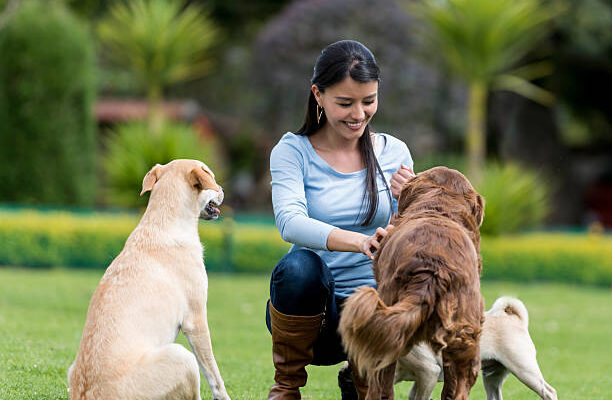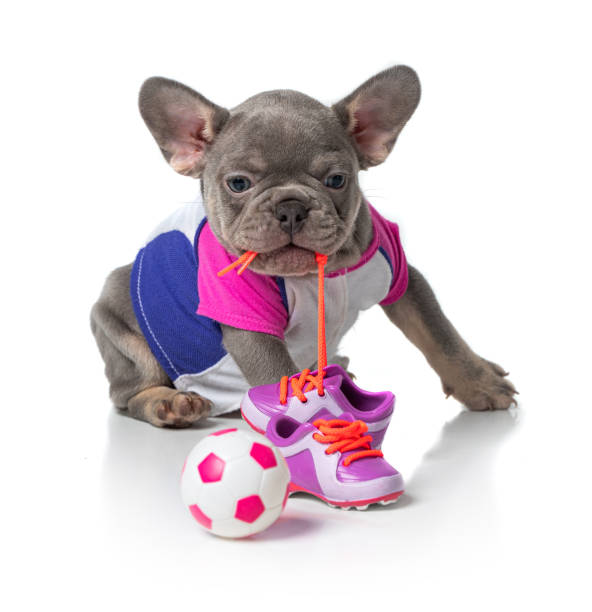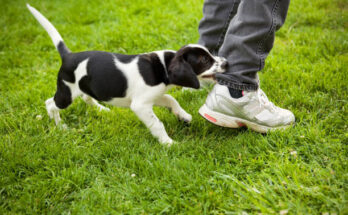As a dog owner for the past 15 years, I’ve learned that training your dog is one of the most rewarding experiences.
Whether you’re bringing home a playful puppy or adopting an older rescue dog, training builds trust and strengthens your bond with your furry friend.
In this guide, I’ll walk you through the essentials of dog training, offer answers to some common questions, and share the techniques that have worked best for me.
How Do You Train a Dog for Beginners?
Training a dog can feel overwhelming at first, especially for beginners. The key is to start simple and be consistent. Here’s what I’ve found works best:
- Understand Your Dog’s Learning Process:
Dogs learn through association, repetition, and rewards. Positive reinforcement—using treats, toys, or praise to reward good behavior—has always been my go-to method. Punishing a dog for mistakes can lead to confusion and fear, so it’s better to focus on rewarding the behaviors you want to see. - Start with Basic Commands:
Begin with simple commands like “sit” and “stay.” These are foundational for any further training. Spend just 10-15 minutes per session working on these commands, and make sure to end on a positive note. Training sessions should be fun for both of you! - Establish a Routine:
Dogs thrive on routine. By setting consistent times for walks, meals, and training sessions, you’ll help your dog understand what’s expected of them. A routine also prevents confusion and stress, making training smoother.
Turn Your Dog into a Genius – watch Video
What Are the 7 Most Important Dog Commands?
Over the years, I’ve found that there are a handful of commands that every dog should know. These commands aren’t just about obedience; they help keep your dog safe and ensure you can communicate effectively.
- Sit: The first command I teach any dog. It’s simple and sets the foundation for more complex commands.
- Stay: Once your dog can sit, teaching them to stay is crucial for safety, especially in busy areas.
- Come: This recall command is essential, especially if your dog is off-leash.
- Down: Similar to sit, but with a bit more control. It’s helpful when you need your dog to calm down or stay in one spot for a while.
- Leave It: Teaching your dog to leave something alone can prevent them from picking up dangerous items.
- Heel: A controlled walk without pulling is a must for enjoyable strolls around the neighborhood.
- No: While it may seem simple, the “no” command is vital for setting boundaries and preventing unwanted behavior.
These commands, when taught with patience and positive reinforcement, will make life easier for both you and your dog.
Can I Train My Dog Myself?
Absolutely! As someone who’s trained several dogs over the years, I can confidently say that you don’t need to hire a professional trainer unless your dog has severe behavioral issues.
Training your dog yourself not only saves money but also strengthens your bond. Here’s how you can do it successfully:
- Start Small: Don’t overwhelm yourself or your dog by trying to teach everything at once. Begin with one or two commands and build from there.
- Stay Consistent: Consistency is key. Make sure every family member uses the same commands and rewards to avoid confusing your dog.
- Use Positive Reinforcement: I can’t stress this enough. Rewarding good behavior leads to better results and a happier dog.
That said, if your dog is showing signs of aggression or has specific challenges, seeking professional help might be the best option.
What Is the Fastest Way to Train a Dog?
While there’s no magic formula for training a dog overnight, there are ways to speed up the process:
- Short, Frequent Sessions: Instead of long training sessions, aim for multiple short ones throughout the day. This helps keep your dog engaged and prevents frustration.
- Immediate Rewards: Timing is everything. Reward your dog as soon as they perform the desired behavior so they make the connection.
- Clicker Training: If you’re looking for a more precise method, clicker training is an excellent tool. It uses a small clicker to mark the exact moment your dog performs the right action, followed by a reward.
By staying positive and consistent, your dog will pick up new commands faster than you might expect.
How to Train a Puppy vs an Adult Dog
Training a puppy and training an adult dog are two different experiences, but both require patience and consistency.
Training a Puppy:
With puppies, focus on socialization and basic commands. Potty training and crate training should also be top priorities. Puppies have short attention spans, so keep sessions brief and full of fun.
Training an Adult Dog:
Training an older dog, especially a rescue, may require more patience. Some adult dogs may have ingrained habits, but they’re still capable of learning new things. Approach the training with the same consistency and positive reinforcement, and you’ll be amazed at how adaptable adult dogs can be.
Turn Your Dog into a Genius – watch Video
Common Dog Training Mistakes to Avoid
After years of trial and error, I’ve learned a few things the hard way. Here are some common mistakes to avoid when training your dog:
- Inconsistent Commands: If you use different words or tones for the same command, your dog will get confused.
- Negative Reinforcement: Yelling or punishing your dog for mistakes only creates fear and anxiety, which hinders the training process.
- Not Training in Different Environments: Dogs don’t automatically generalize commands. Practice in different locations and with various distractions to ensure your dog’s behavior is reliable.
- Ignoring Socialization: Exposing your dog to different people, places, and other dogs is crucial for well-rounded behavior.
Recommended Dog Training Tools and Products
When it comes to training your dog, having the right tools can make the process smoother and more enjoyable.
Over the years, I’ve experimented with different products that have made a real difference in how effectively I could train my dogs.
Below are some of my top recommendations, including a fantastic online course that can take your training to the next level.
Brain Training for Dogs
One of the best resources I’ve come across is the “Brain Training for Dogs” program.
Created by professional dog trainer Adrienne Farricelli, this online course focuses on stimulating your dog’s mind through fun, engaging activities.
Whether you’re dealing with a stubborn dog, looking to correct behavioral issues, or just want to teach your dog new tricks, this program offers easy-to-follow, science-based methods that work.
What I love about this course:
- Step-by-Step Instructions: You don’t need to be an expert to follow along. The videos break down each exercise into manageable steps.
- Positive Reinforcement: The entire program is based on positive reinforcement, which I’ve found to be the most effective and humane way to train dogs.
- Tailored for All Dogs: Whether you have a puppy, an older dog, or a breed that’s known to be challenging, the course offers something for every dog and owner.
If you’re serious about training your dog and want to make it an enjoyable experience for both of you, I highly recommend checking out the Brain Training for Dogs course.
It’s a small investment that pays off with a well-behaved, happy dog.
2. Clickers for Training
Clicker training is an excellent way to reinforce good behavior by marking the exact moment your dog does something right.
The clicker is a simple device that makes a consistent sound, which helps your dog understand which behavior is being rewarded.
Pair it with treats, and you’ll be amazed at how quickly your dog learns new commands.
3. Interactive Toys and Puzzles
Mental stimulation is just as important as physical exercise for dogs. Puzzle toys that dispense treats or require problem-solving can keep your dog entertained while reinforcing training principles. These toys also help prevent boredom, which can lead to destructive behaviors.
4. Treat Pouches
Having treats on hand during training is crucial, and a good treat pouch makes it easy. Look for one that attaches to your belt or waistband for easy access. This small addition to your training routine can keep your sessions flowing smoothly.
5. Comfortable Leashes and Harnesses
A sturdy, comfortable leash and harness are essential for leash training. I prefer harnesses that distribute pressure evenly across the dog’s chest rather than their neck, ensuring a more comfortable experience during walks.
Turn Your Dog into a Genius – watch Video
Conclusion
Training your dog is a journey filled with small victories and learning experiences.
Whether you’re teaching basic commands, leash training, or tackling behavioral issues, remember that consistency, patience, and positive reinforcement are your best tools.
By dedicating time and effort to training, you’ll enjoy a well-behaved dog and a stronger bond that will last a lifetime.
So grab some treats, keep it fun, and start your training journey today.
And if you’re looking for additional help, don’t forget to check out my recommended products, like the “Brain Training for Dogs” course, to guide you along the way!






May I request more information on the subject? All of your articles are extremely useful to me. Thank you!
Thank you for your articles. They are very helpful to me. May I ask you a question?
Your articles are very helpful to me. May I request more information?